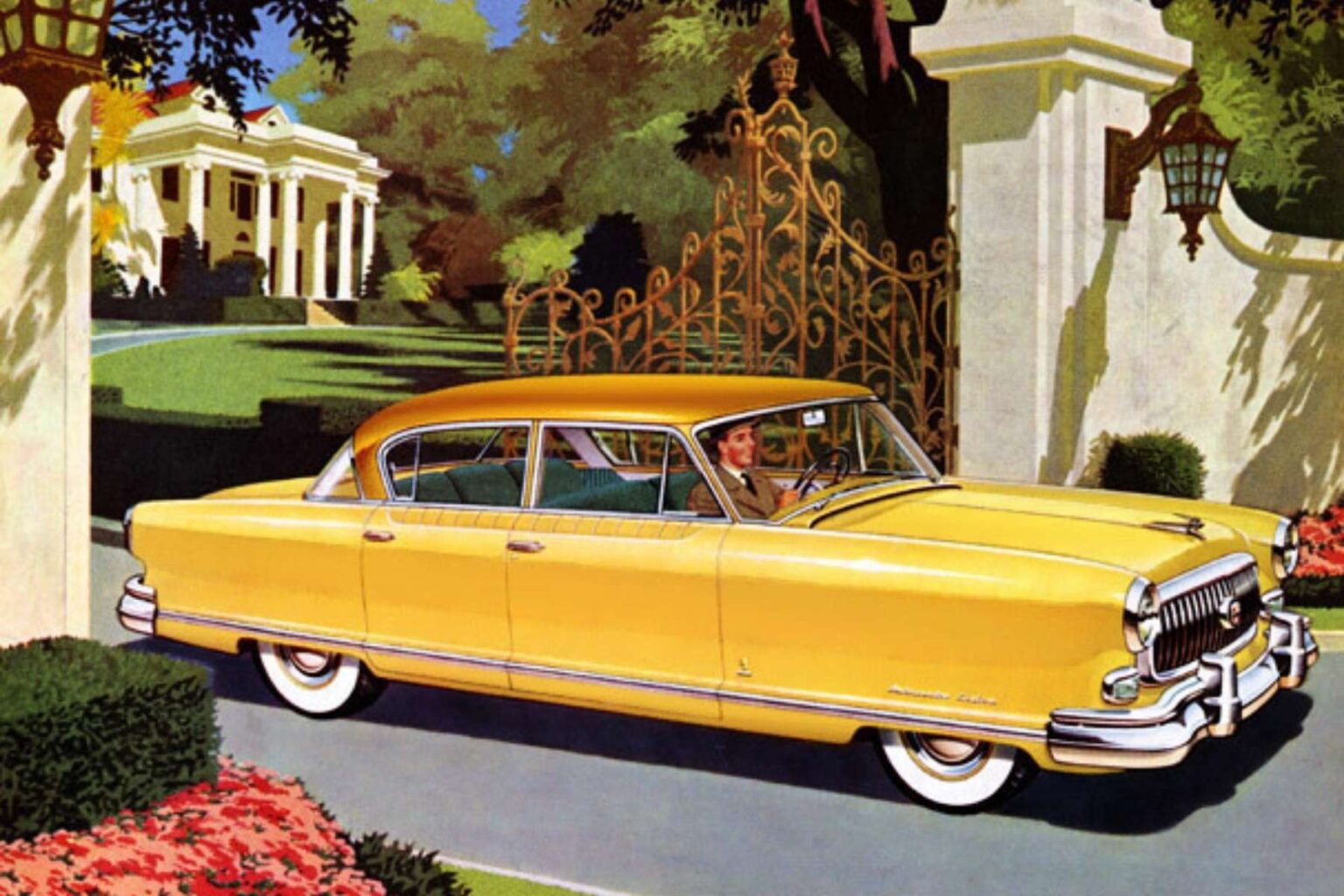You might be surprised to learn that some of the most groundbreaking features in today’s cars were first introduced by brands that no longer exist. Think of automatic transmissions or sleek, aerodynamic designs—these innovations didn’t just appear out of nowhere.
Brands like Borgward and Oldsmobile were once at the cutting edge, setting trends that continue to resonate. Yet, they’ve faded into obscurity, overshadowed by modern giants. What happened to these pioneering companies, and how do their legacies continue to influence the cars you drive today? Let’s uncover their stories and explore their lasting impacts.
Borgward’s Engineering Prowess
Borgward‘s engineering prowess left an indelible mark on the automotive industry through its groundbreaking innovations. People were driving a car with an engine efficiency that seemed decades ahead of its time. Borgward made this possible with its pioneering introduction of Fuel Stratified Injection (FSI) in the Goliath GP700.
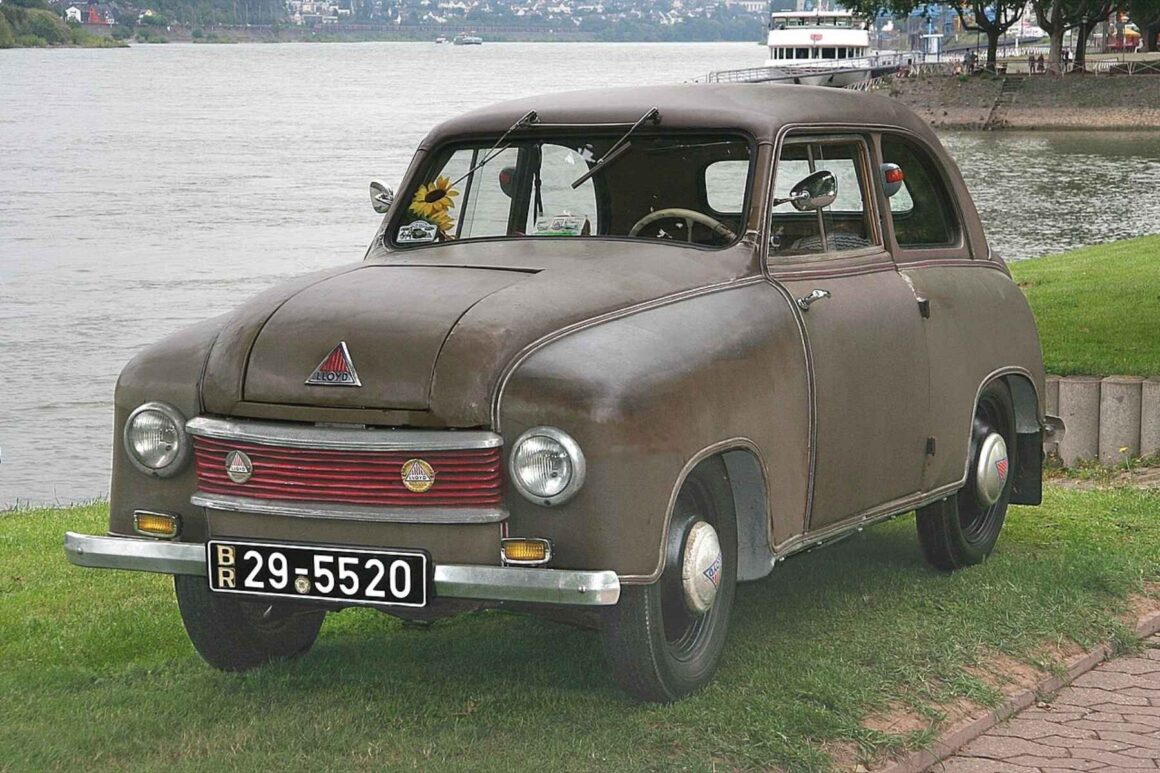
This move was like giving your engine a brain boost, making it smarter and more efficient. The introduction of the world’s first compact car, the Lloyd LP300, showcased Borgward’s revolutionary approach using lightweight materials to enhance vehicle performance. And let’s not forget those boxer 4-cylinder engines for the Traumwagen, packing up to 130 horsepower—enough to make your everyday commute feel like a joyride.
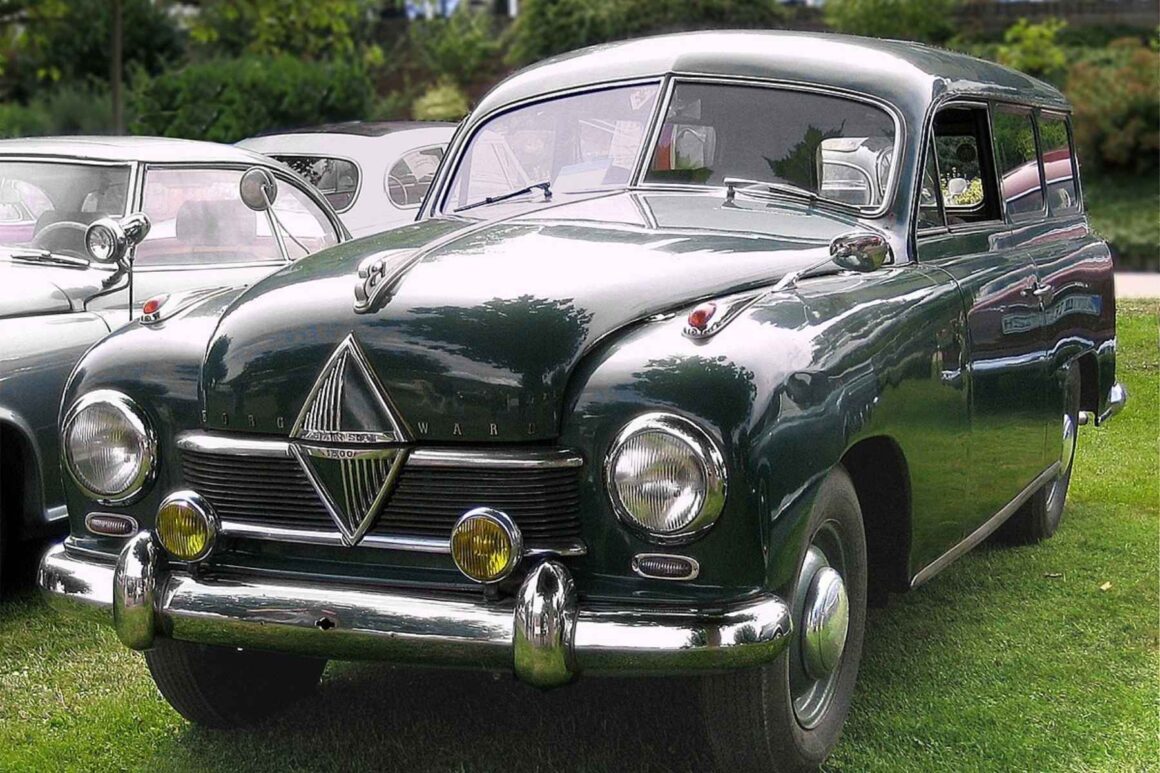
But wait, there’s more. Borgward didn’t stop at engines; they also revolutionized transmission technology. Consider this: cruising in a Hansa 1500 equipped with the Y-transmission, Germany’s first fully automatic passenger car transmission. It’s like swapping your typewriter for a sleek new laptop. Borgward’s Hansamatic transmission, introduced in 1959, took things up a notch by ditching the power-draining torque converter, making your drive even smoother.
Borgward’s innovations were like a revitalizing change in a world dominated by manual labor. They didn’t just build cars; they crafted experiences, turning every drive into a journey worth remembering.
Horch’s Legacy of Innovation
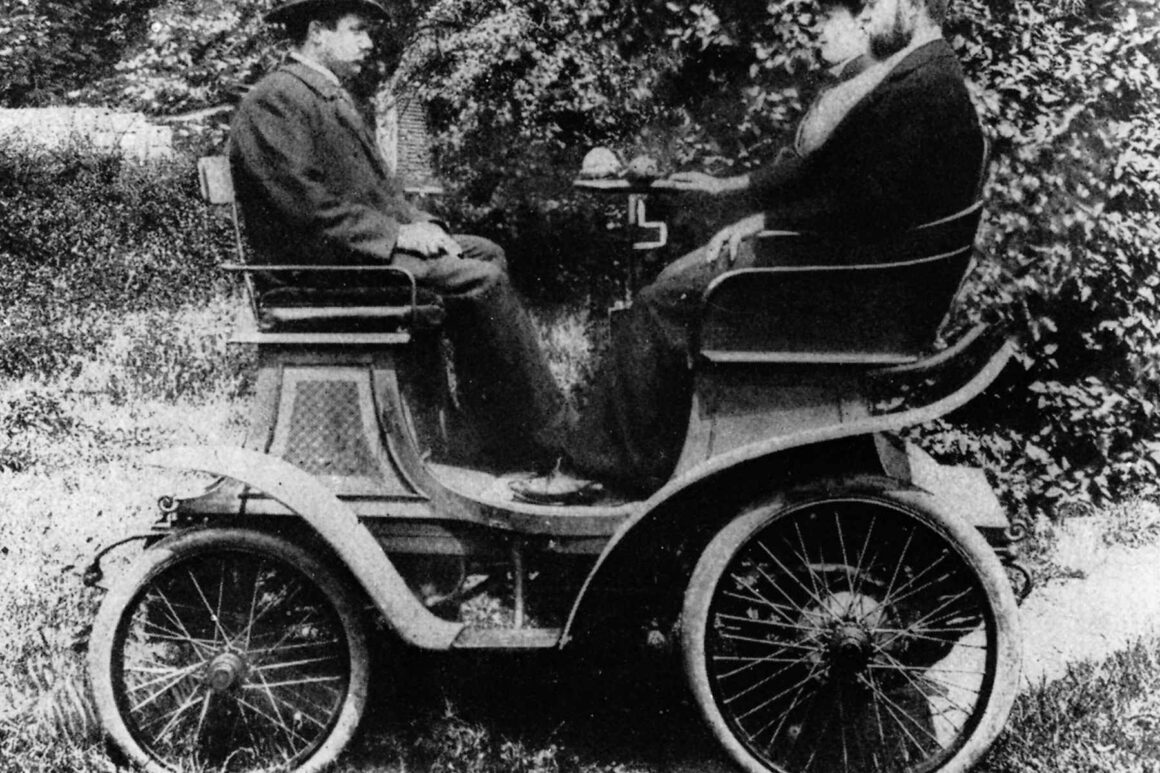
In the world of automotive history, Horch‘s legacy of innovation stands as a demonstration to pioneering spirit and engineering excellence. We remember starting in a former horse stall in 1899, crafting engines with a touch of genius. That’s exactly what August Horch did, bringing forth creations like the Horch No. 1 by 1900. He didn’t stop there—Horch innovations included a commutator switch for quicker engine ignition and a cardan shaft drive that revolutionized how cars moved. Talk about thinking outside the horse stall!
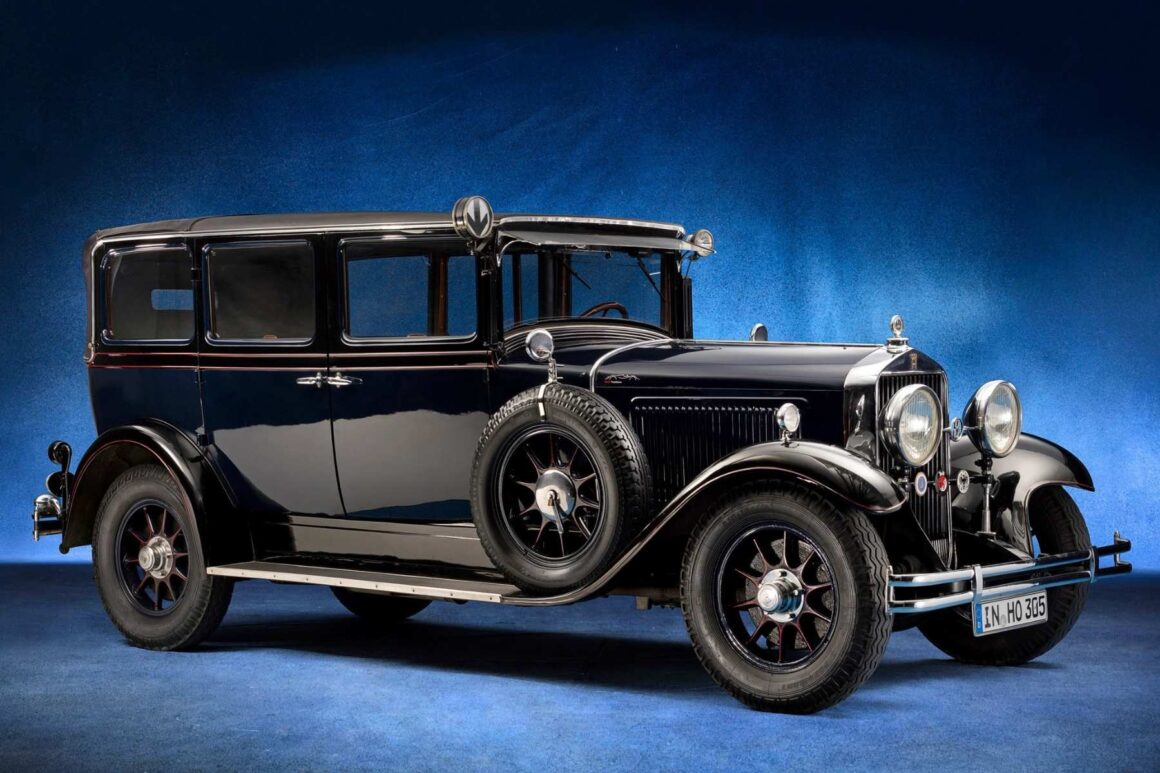
By 1904, Horch had shifted gears, literally and figuratively, turning his company into a luxury craftsmanship powerhouse in Zwickau. Consider this: large, powerful cars rolling out, grabbing the spotlight in motorsports and catching the eye of big names like Thomas Mann and Max Schmeling. Horch didn’t just make cars; he crafted experiences that whispered elegance and roared performance. The legacy continued with the Horch 8 Type 303, a landmark in automotive design, showcasing both luxury and engineering prowess.
Despite merging into Auto Union in 1932, Horch’s luxurious legacy never faded. Even after World War II halted production, the Horch name lived on, eventually inspiring modern tributes like the Audi A8 L Horch. Today, classic car enthusiasts still celebrate those iconic models, proving Horch’s innovations genuinely shaped history.
Nash’s Automotive Breakthroughs
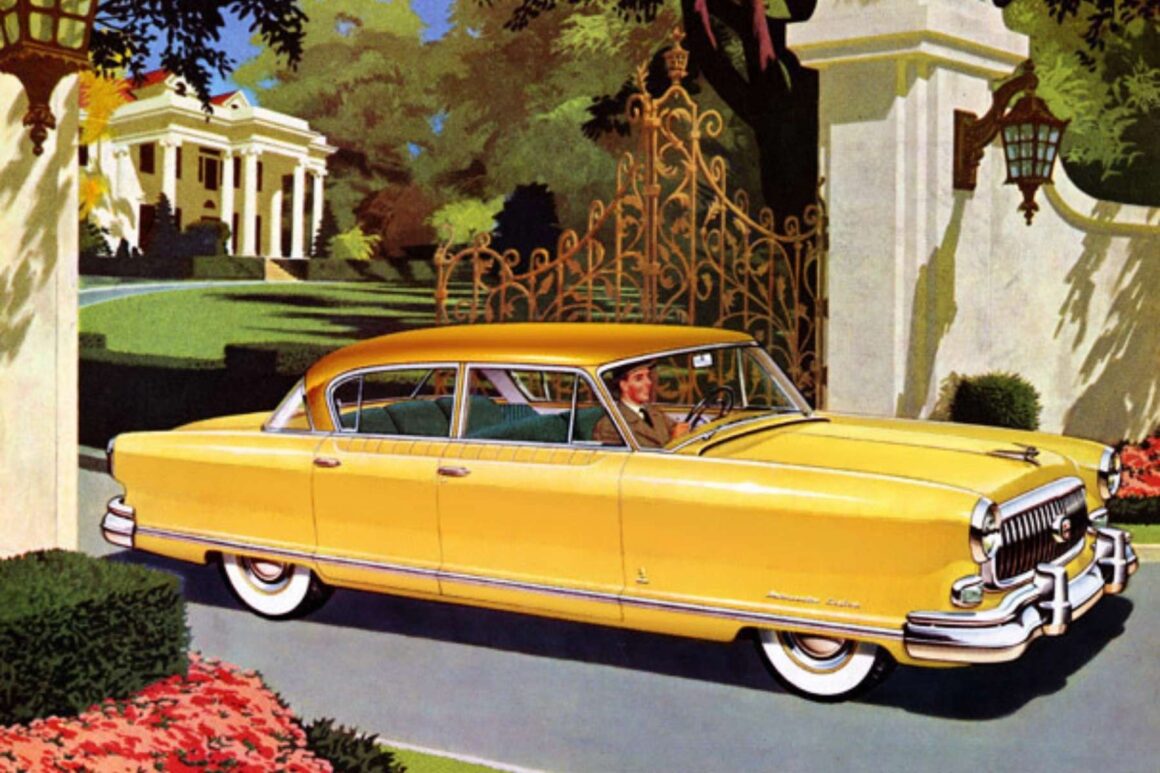
When you think of groundbreaking car innovations, Nash should be on your radar. It’s 1941, and Nash introduces the first American mass-produced unibody car, offering a sleek design that turns heads and changes the game. Unlike traditional body-on-frame construction, Nash’s approach involves welding body panels directly onto the frame, enhancing durability and handling. It’s like giving their vehicles a gym membership—stronger and more agile! In 1952, Nash’s redesign of full-sized cars, labeled as Golden Airflytes, marked the company’s 50th anniversary with a bold and contemporary style.
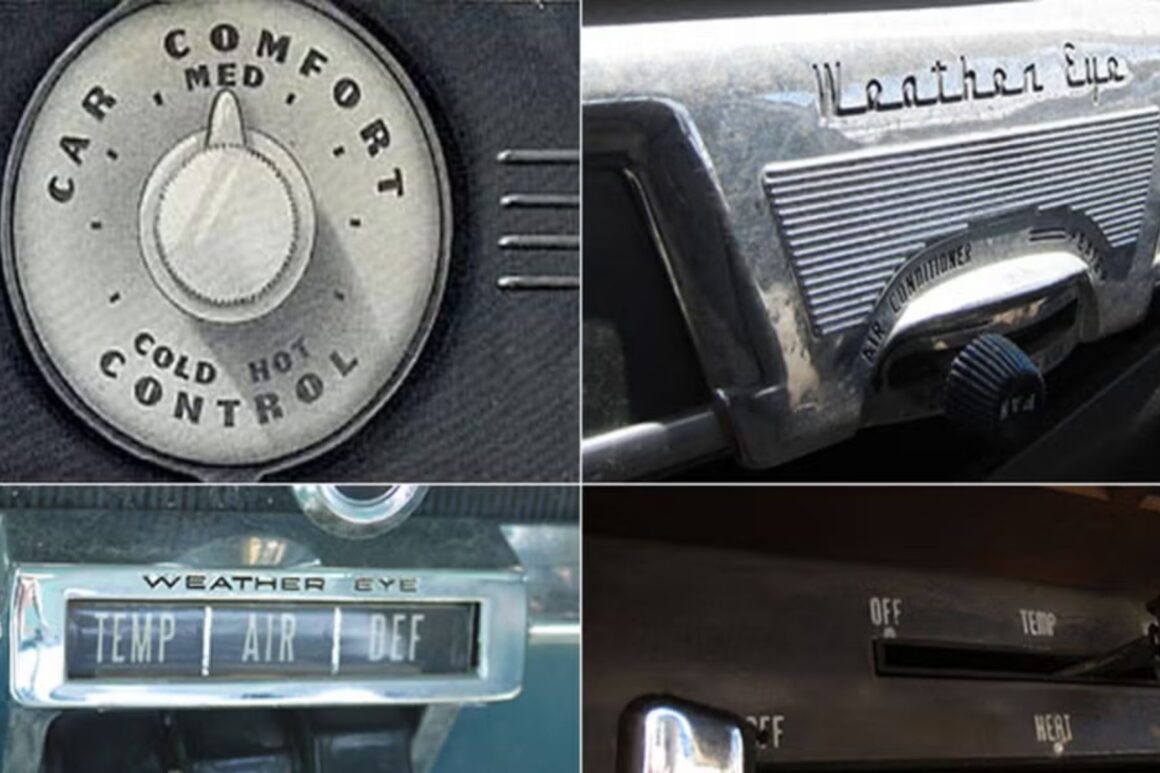
But Nash didn’t stop at just toughening up their cars. Comfort was an essential part of their automotive breakthroughs. Picture yourself driving on a chilly morning in 1938 and experiencing the warmth of the first thermostatic climate control system, the Nash Weather Eye heater. It’s like having a cozy fireplace on wheels. This innovative heating and ventilation system, informed by Kelvinator’s cooling expertise, was a warm hug for drivers long before seat warmers were a thing.
Nash also introduced independent coil springs and sealed-beam headlights, making rides smoother and safer. And let’s not forget their early adoption of seat belts in 1950—another nod to safety before it was cool. Nash’s pioneering spirit didn’t just build cars; it crafted unforgettable experiences behind the wheel.
Auburn’s Speed and Style
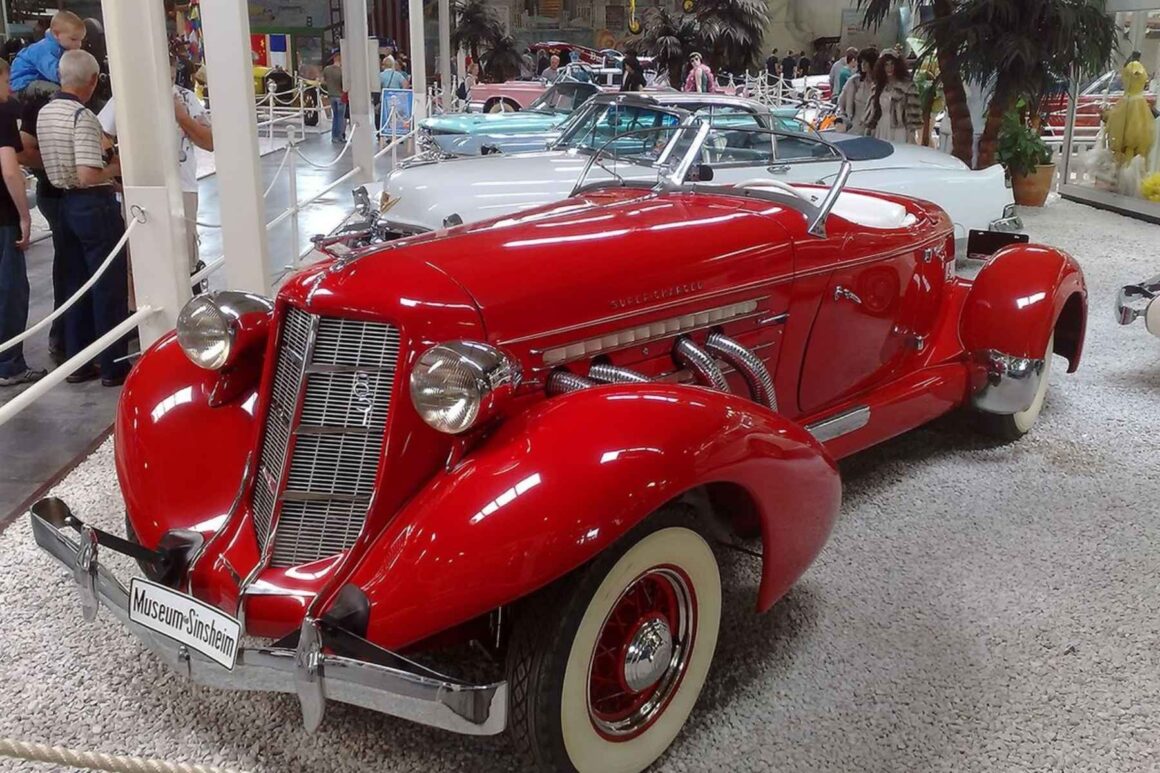
Although the Auburn Automobile Company may not be a household name today, its legacy of speed and style left a significant mark on automotive history. Envision cruising down the road in an Auburn Speedster, a car so sleek it seemed to cut through the air with ease. Designed by Gordon Buehrig, the 1935 Auburn 851 Speedster is a masterpiece of Art Deco design, combining elegance with raw power. Its Lycoming straight-eight engine, paired with a Schwitzer-Cummins supercharger, made it not just a beauty but a beast on the road, earning its stripes by setting speed records at Muroc Dry Lake.
You’d be forgiven for thinking the Auburn Speedster was more about looks than performance, but that’s where you’d be wrong. It wasn’t just a pretty face; it was an engineering marvel, boasting innovations like hydraulic brakes. E.L. Cord’s vision took Auburn from modest beginnings to international acclaim, with over 100 dealers in 93 countries by 1931. Though the Great Depression ultimately led to Auburn’s demise, the Art Deco allure and groundbreaking advancements of its cars live on at the Auburn Cord Duesenberg Automobile Museum, where these automotive legends continue to inspire awe. This museum, which opened on July 6, 1974, showcases art deco architecture, providing visitors with a glimpse into the era that shaped Auburn’s distinctive style.
Saab’s Safety Revolution

As the elegance and performance of Auburn’s creations resonate through history, Saab’s pioneering spirit in safety brought a different kind of revolution to the automotive world. Envision driving a Saab 99 in 1968, where safety innovations were not just buzzwords but a reality. Saab introduced the first production car with a safety cage, a dashboard that absorbed impact, and a collapsible steering column. These features were like having a guardian angel riding shotgun. Saab even got creative with a rear-mounted spare tire for extra crash protection—talk about thinking outside the box!
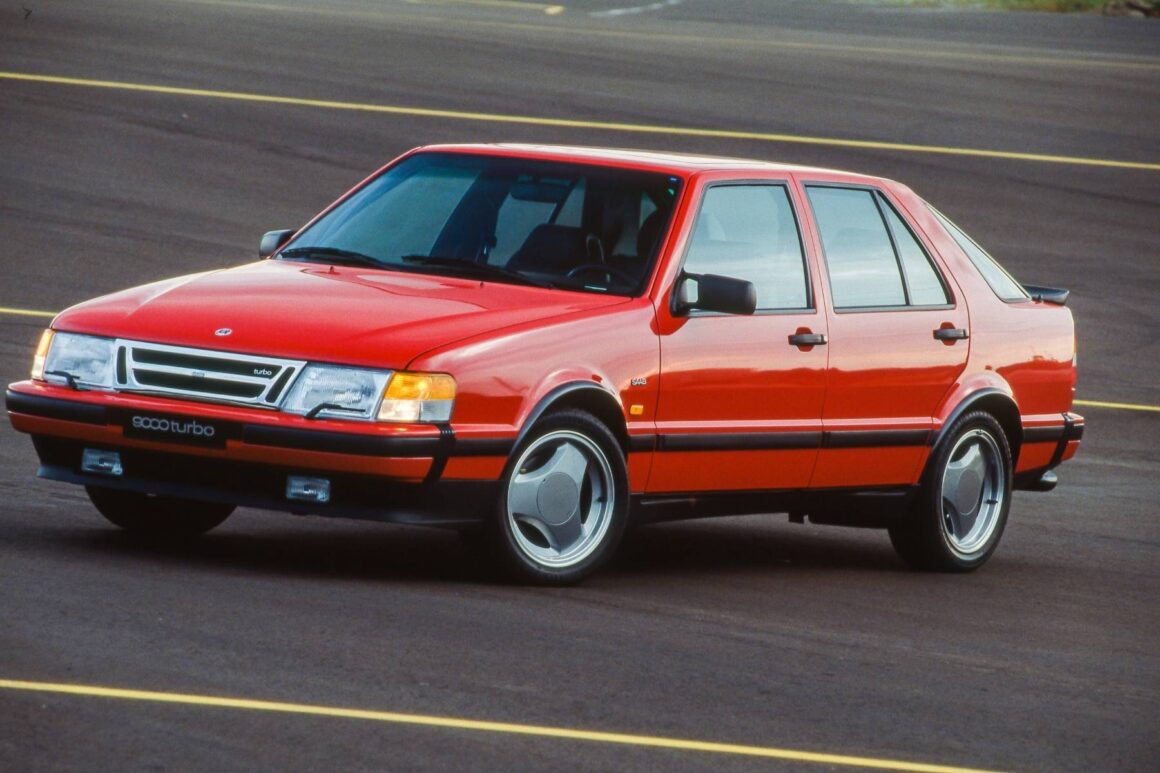
Fast forward to 1984, and the Saab 9000 rolled out the first side-impact protection system. You would’ve felt like a VIP with the active headrests reducing whiplash injuries. Saab made anti-lock braking systems standard, adding traction control for good measure. Their advanced airbag systems were like a safety net, ready to catch you in any mishap.
Saab didn’t just stop at features. They were crash testing pioneers, collaborating with insurance companies, and even had their own “Saab Car Crasher” facility. Their safety reports were like cliffnotes for the industry, setting new safety benchmarks and influencing global regulations.
DeLorean’s Iconic Design
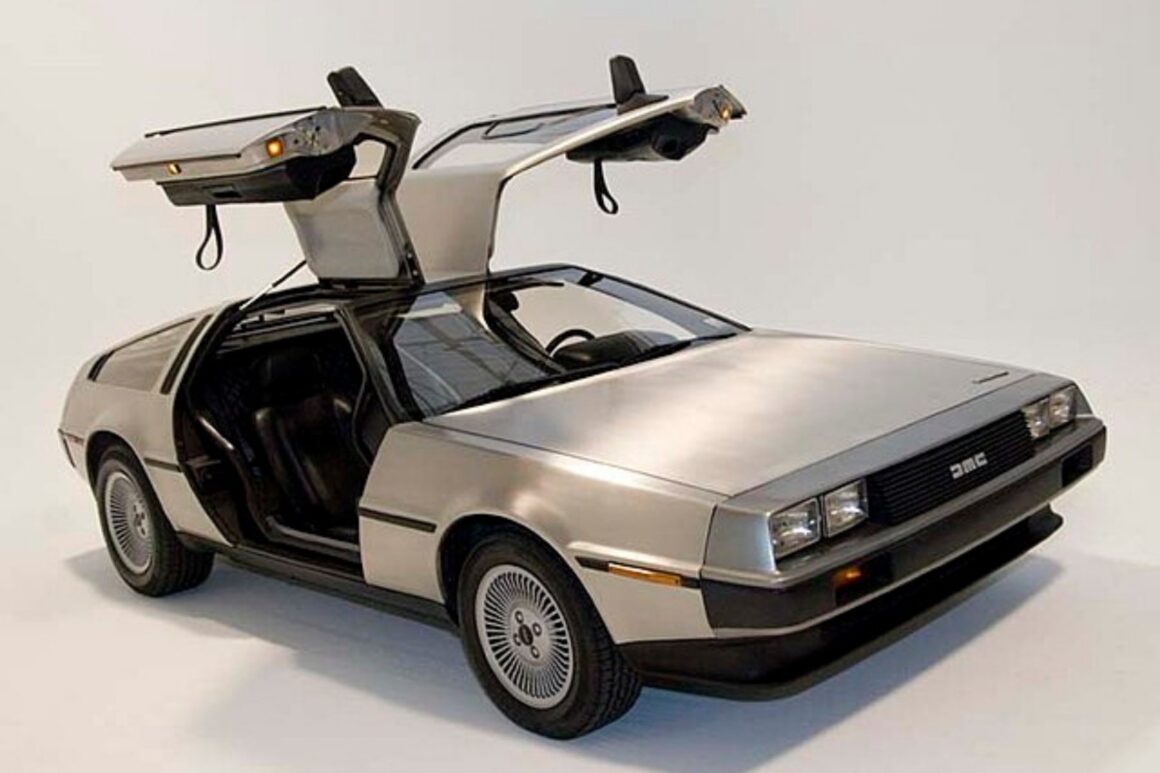
Few cars have captured the public’s imagination quite like the DeLorean DMC-12, a masterpiece of design by Giorgetto Giugiaro and his team at Ital Design. You can’t help but admire its futuristic vibe, with those distinctive gull-wing doors that lift upward like a bird taking flight. It’s almost as if the car itself is ready for adventure, promising a ride into the unknown. The DeLorean DMC-12’s cultural impact was further solidified by its role in the Back to the Future franchise, which transformed it into a symbol of 1980s automotive culture.
Wrapped in uncolored brushed 304 stainless steel, the DeLorean dazzles under the sun, offering a sleek, durable finish that resists rust. This choice of material wasn’t just for aesthetics; it was about creating a car that was as enduring as it was eye-catching. The wedge design, inspired by Giugiaro’s earlier concept for Porsche, gives it a sharp, aerodynamic look, making it a head-turner wherever you go.
Inside, you’d find a unique blend of ethical and practical design, aimed at delivering a fuel-efficient and safe sports car. While the DMC-12 might not have roared with horsepower, its iconic design left a lasting mark on automotive history. The DeLorean isn’t just a car; it’s a statement of innovation and imagination.
Oldsmobile’s Enduring Influence
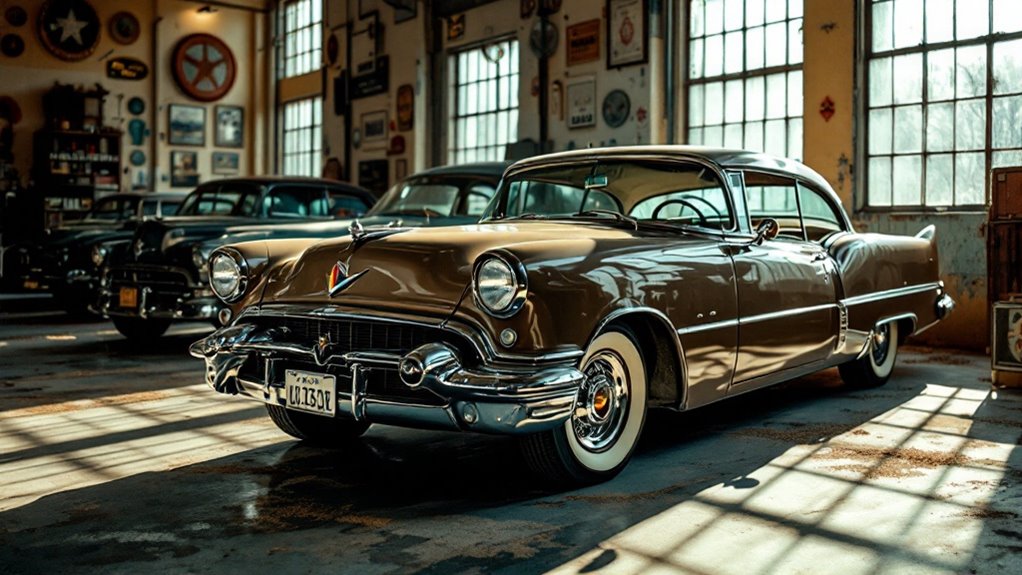
Oldsmobile’s contributions to the automotive world are immense, shaping the industry with groundbreaking innovations that still resonate today. You might not drive an Oldsmobile now, but the Oldsmobile Legacy lives on through innovations like the Hydramatic, the first fully automatic transmission introduced in 1940. Envision cruising down the road without worrying about shifting gears—thank Oldsmobile Innovations for that. And let’s not forget the Rocket V8 engine of 1949, packing a mighty punch with up to 300 horsepower by the mid-1950s. It was like strapping a rocket to your car, quite literally!
Oldsmobile also revolutionized manufacturing with the first assembly line, paving the way for affordable cars. Consider this: the Curved Dash Olds, the first mass-produced vehicle in America, rolling off the assembly line like hotcakes. Talk about efficiency!
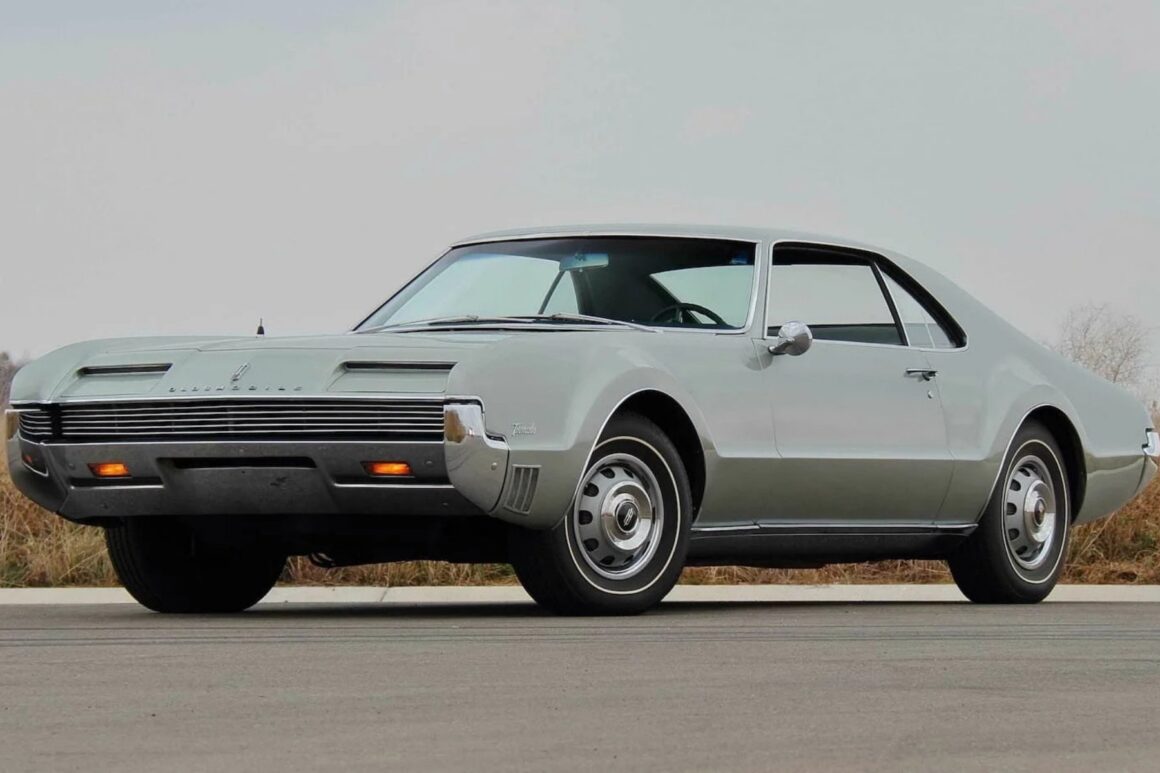
They didn’t stop there. The 1966 Toronado brought front-wheel drive back into the limelight and even featured the Turbo-Hydramatic transmission. Oldsmobile’s Liberty aircraft engines production during World War I was another notable contribution, showcasing their versatility in engineering. Oh, and if you’ve ever appreciated a draft-free car ride or an automatic headlight dimming system, that’s Oldsmobile Innovations at work. So, next time you enjoy these comforts, give a nod to Oldsmobile’s enduring influence.
Wrapping up
You’ve journeyed through the fascinating stories of these forgotten car brands, haven’t you? They’ve left an indelible mark on the automotive world, blending artistry, engineering, and innovation. Who would’ve guessed that Oldsmobile’s automatic transmission or DeLorean’s futuristic design would still echo in today’s cars? These brands might be gone, but their legacies persist, whispering through every sleek line and powerful engine. So, next time you hop into a car, pause briefly to appreciate the history driving you forward.

